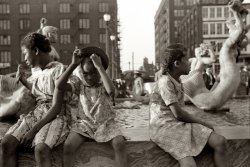
MAY CONTAIN NUTS

Search Shorpy
SHORPY ART

Framed or unframed, desk size to sofa size, printed by us in Arizona and Alabama since 2007. Explore now.
Join and Share
Ad-Free Shorpy
Shorpy is funded by you. Patreon contributors get an ad-free experience.
Learn more.

Recent comments
- Details, Details
- What's that building to the left of the tower?
- Coal Barges
- Bromo-Seltzer
- Inner harbor
- The Basin
- What a headache!
- Giant stepladder?
- Baldwin 62303
- Baldwin VO-1000
- Cold
- No expense spared
- Tough Guys
- Lost in Toyland
- And without gloves
- If I were a blindfolded time traveler
- Smoke Consumer Also Cooks
- Oh that stove!
- Possibly still there?
- What?!?
- $100 Reward
- Freeze Frame
- Texas Flyer wanted
- Just a Year Too Soon
- WWII -- Replacing men with women at the railroad crossing.
- Yes, Icing
- You kids drive me nuts!
- NOT An Easy Job
- I wonder
- Just add window boxes
Member Photos
The Shorpy
Print Emporium
Print Emporium
Search Shorpy
Search results -- 30 results per page
- Double Rich: 1941
- ... a streetcar." 35mm nitrate negative by John Vachon for the Farm Security Administration. View full size.
They both look like they ... Posted by Dave - 03/30/2013 - 11:25am -
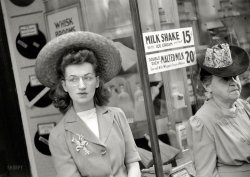
- Over Omaha: 1938
- ... Tri-City Barber College. Photo by John Vachon for the Farm Security Administration. View full size.
Found one! The Ford Bros. ... Posted by Dave - 06/24/2019 - 12:59pm -
![Over Omaha: 1938 November 1938. "Omaha, Nebraska." A bird's-eye view of, among other attractions, Tri-City Barber College. Photo by John Vachon for the Farm Security Administration. View full size.
Found one!The Ford Bros. building (in the upper right corner of the photo) still stands at the corner of Dodge & 11th streets.
Graybar Electrical SupplyContinues to thrive all over North America, and is still employee-owned.
An early Ford spottedOne of the billboards advertises the film "Submarine Patrol," which was directed by John Ford for 20th Century Fox, the last Ford-directed film before a run of seven box-office or critical successes in a three-year period that would make him a legend.
Much Has ChangedMy 1940 Omaha City Directory places the barber school at 1302 Douglas Street. Virtually everything in this photo is now gone.
Much Has Changed IndeedI'm glad EADG found the barber school at 1302 Douglas Street, because I found the Arcade Hotel at 1215 Douglas (reference: https://history.nebraska.gov/collections/arcade-hotel-omaha-neb-rg3870am). Since hlupak604 identified the Ford Bros. Van & Storage building still standing at Dodge and N 11th Streets that means this photo is looking north towards what is now Interstate Highway 480. The railroad tracks in this 1938 photo, almost every building, and the tall building from which this photo was taken (and is casting the shadow) are gone.
Yes pleaseSunshine Biscuits! Yay! I'll have a case of Hydrox cookies. And a visit to the Uptown Cafe too, after parking under cover for only 20 cents. Just sounds like a great time. What a fabulous picture. I scanned it for many minutes, as big as I could get it. This is why I love Shorpy: unvarnished but soulful glimpses of long-ago America.
It took me awhile to find oneDoesn't look like they had too many trees in the area back then
Strange place for a periodThe A.Y. McDonald Mfg. Co. has a period under the c in McDonald. I'm what is considered an old timer, and I had never seen this before today.
[Those glyphs (dots, triangles, dashes, etc.) under superscript letters are diacritics. - Dave]
Identity Theft?It is interesting to note that this 1938 scene includes a billboard touting the presumably-yet-to-be-released 1939 Chevrolet by means of an illustration that bears very little resemblance to the actual design. Could this have been an early version of fake news?
[As most everyone knows, Detroit’s model year begins in the fall or summer of the previous calendar year. And that is a faithful rendering of the 1939 Chevrolet. -Dave]
The '39 Chevy had a V-section grille, receding at the top, with a center strip. The illustration suggests a more LaSalle-like vertical curved prow -- reason to believe that the illustrators were working from a prototype or sketch of same.
[You're mistaken. And the photo is from November 1938. - Dave]
A.Y. McDonald Mfg. Co.An immigrant from Scotland, born in 1834, A. Y. McDonald opened his plumbing shop in Dubuque, Iowa, in 1856, making his company nowadays, at 163 years old, one of the country’s 100 oldest family businesses. It expanded to Omaha in 1915. The firm’s president is still a McDonald, great-great-grandson of the founder. A.Y. himself was in the Civil War, shot twice, and he was shot a third time, later in life, in a home invasion. He died in 1891 at the age of 57.
What a fascinating photo that rewards multiple and extended viewings. It all seems to be gone, as EADG points out, but if you google 1150 Douglas Street, outside the photo to the right, to the east of the Omaha Stove Repair Works (1206-8 Douglas), you can streetview a few old survivors, notably a three-story red-brick building marked Specht.
OopsHey, Dave, you're right! It appears that the photos I googled, in an attempt to make sure I knew what I was talking about, illustrate 1940 models. Now, as a kid I'd never have been fooled in that way. Thanks for engaging on this one!!!
Graybar Electrical Supply... has a fascinating story. "Gray" is Elisha Gray, the (alleged) inventor of the telephone, whose patent was scooped by Alexander Graham Bell. The company was spun off from Western Electric, the wholly-owned supplier to the Bell System.
https://en.wikipedia.org/wiki/Graybar
(The Gallery, John Vachon, Omaha)](https://www.shorpy.com/files/images/SHORPY-8b14209a.thumbnail.jpg)
- The Flavor Lasts: 1940
- ... the Key City. 35mm nitrate negative by John Vachon for the Farm Security Administration. View full size.
Attention please Will the ... Posted by Dave - 05/17/2011 - 4:56pm -
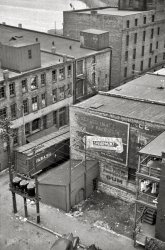
- Dishpan Hans: 1937
- ... in lumber camp." Medium format negative by Russell Lee, Farm Security Administration. View full size.
Behind in his work At least ... Posted by Dave - 02/26/2010 - 7:04pm -
![Dishpan Hans: 1937 September 1937. Effie, Minnesota. "Washing dishes in lumber camp." Medium format negative by Russell Lee, Farm Security Administration. View full size.
Behind in his workAt least when the young man tired of scrubbing, he could look up and see the nice view! *wink*, *wink*
InspirationTacked up on the window frame just above his head is a rather bawdy picture of a young lady.
Maybe she is his only company in the kitchen, besides all those huge coffee pots hanging up. Seeing all those big coffee pots makes me want a good cup of coffee too.
199, 198, 197 ...It looks like he had to do a lot of washing by the amount of dishes in the picture.
Definition of RusticWow! Now that's a no-frills setup. I'd give my last molar to get a glimpse in the "sink." What do you want to bet he's got a couple of wash tubs in there? Nary a speck of porcelain in sight.
[Except on all those dishes. - Dave]
Who made this mess?There are only about 90 people in Effie. Must have been more in 1937, when there were still trees to cut.
[This was a lumber camp near the town. The lumberjack population being somewhat transient. - Dave]
Gotta sayThat he's a fellow with a lot of Pride in his work.
Obvious StatementUnless Dave is reviewing a similar comment not yet posted, let me be the first to note that:
This young man has a lot of Pride (tm) in his work.
[You may groan now]
All I can make out on the boxes is Pride Washing Powder. Performing a quick search online I found nothing - but Dave found the following images:
I'll show my son this!My 16 YO son works at a restaurant where he usually has to wash dishes. He does it using modern equipment, of course, but is still much happier when they let him do something else. I think maybe this picture might help him feel like he doesn't have it so bad, though! I wonder how many hours this poor young man had spent standing in front of that sink, and how many he still had to go!
More than just "pride"I think he probably had a lot of "Pride and Joy" in his work.
(The Gallery, Mining, Russell Lee)](https://www.shorpy.com/files/images/8b19964u.thumbnail.jpg)
- Nicotine, Caffeine, Gasoline: 1939
- ... Oklahoma." Medium format negative by Russell Lee for the Farm Security Administration. View full size.
Down to Snuff Great-Grandmother and ... Posted by Dave - 04/07/2018 - 4:50pm -
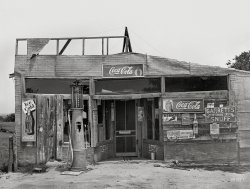
- Sun Belt: 1937
- ... worker from Oklahoma." Photo by Arthur Rothstein for the Farm Security Administration. View full size.
Flashback Many times Shorpy ... Posted by Dave - 08/15/2014 - 3:21pm -
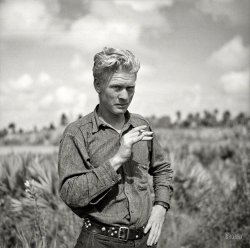
- Life Used to Be So Hard: 1939
- ... Yakima Valley, near Wapato. One tenant purchase program (Farm Security Administration) client, Jacob N. Schrock. This family with eight ... Posted by Dave - 04/11/2017 - 2:26pm -
![Life Used to Be So Hard: 1939 August 1939. "Washington, Yakima Valley, near Wapato. One tenant purchase program (Farm Security Administration) client, Jacob N. Schrock. This family with eight children had lived for 25 years on a rocky, rented farm in this valley. They now own 48 acres of good land, this good house, price $6,770. They raise hay, grain, dairy and hogs. Mrs. Schrock says, 'Quite a lot of difference between that old rock pile, and around here'." Photo by Dorothea Lange. View full size.
Verl Elizabeth Shrock MoeShe was born November 11, 1925, in Wapato, Washington, one of ten children born to the late Jacob and Rhoda Shrock (from Find A Grave).
I'd pay thatThe BLS Inflation Calculator tells me that $6770 in 1939 is the same as $118,646.93 today.
Cat HouseThere appears to be a prejudice against man's best friend. Hopefully the dog is around back. You can't have a farm without at least one dog. It's a fact. Google it.
The term running water applies here. Hand pumpIf you want water. You have to 'Run' out for the stuff.
Mom behind the doorMrs. Schrock peeks shyly out from behind the screen door. It looks like she's still in her apron. The children are in freshly washed and ironed clothing and their hair is neatly combed. After all the trouble of getting the kids washed and dressed, she probably didn't have time to neaten herself up (although she looks fine to me).
DogI think the little girl sitting on the ground is cuddling a dog.
[Two cats. -tterrace]
(The Gallery, Cats, Dorothea Lange, Kids)](https://www.shorpy.com/files/images/SHORPY-8b34377a.thumbnail.jpg)
- Truck Museum: 1941
- ... merchants sell to retailers." Photo by John Vachon, Farm Security Administration. View full size.
Bald tires! The Wulfstat ... Posted by Dave - 08/02/2012 - 9:54pm -
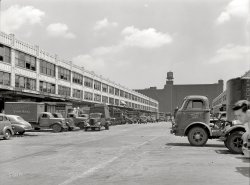
- Round Trip: 1942
- ... ride." 35mm nitrate negative by Arthur Rothstein for the Farm Security Administration. View full size.
Well-maintained... At ... Posted by Dave - 03/01/2010 - 6:06pm -
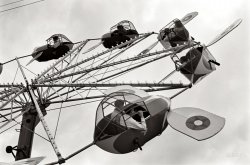
- Porksicle: 1940
- ... be done here. This co-op received a $4,500 loan from the Farm Security Administration." Photo by John Vachon. View full size.
Body ... Posted by Dave - 12/05/2019 - 6:46pm -
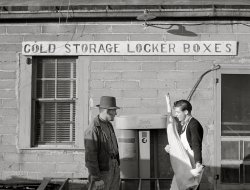
- Gone Visiting: 1939
- ... Medium-format nitrate negative by Dorothea Lange for the Farm Security Administration.
composition a ridiculously beautiful composition. the ... Posted by Dave - 08/09/2012 - 12:35pm -
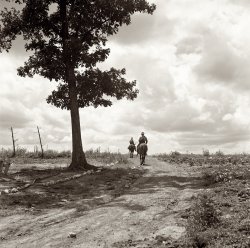
- Black Earth: 1941
- ... Medium format acetate negative by John Vachon for the Farm Security Administration. View full size.
A matter of perspective ... Posted by Dave - 03/20/2020 - 12:45pm -
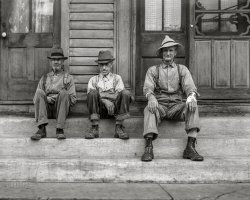
- Big Mama: 1940
- ... Medium format acetate negative by John Vachon for the Farm Security Administration. View full size.
Respect Your Elders Why ... Posted by Dave - 06/18/2020 - 1:21pm -
![Big Mama: 1940 April 1940. "Resident of riverfront shacktown. Dubuque, Iowa." Medium format acetate negative by John Vachon for the Farm Security Administration. View full size.
Respect Your EldersWhy make her weight the subject of your caption? She looked like a nice lady who deserves our respect.
[There's nothing wrong with being big. And that's the title, not the caption. - Dave]
And her little dog, tooCute little dog behind the pump. The woman may be full-figured but it looks like she keeps the place as clean and tidy as she can, despite the fact it looks like it was nailed together with scraps of wood and a prayer. In fact, I bet she was self-sufficient in a whole lot of ways.
Well bless her heartShe may be a big girl, but I bet she birthed a passel of kids, could fry up a batch of chicken that would melt in your mouth, grew her own vegetables and ran her farm like a boss.
Historical ImaginationSad empathy is a little misguided in all these cases - it's home and it's just where you live, and you keep it clean or not just based on what interests you.
I spent every childhood summer vacation in a mountain cabin built in the 1890s, no electricity, water from a brook, with many of the same contents that these houses have.
You just kind of factor it into life. A dog would have been nice.
Sweet old ladyI think we’ve found our new syrup mascot!
Hoo boy.A glimpse of what would, in 80 years, become pretty common.
And still in businessThe Carborundum Company that papered her house is still going strong, just like she was. I wonder what kind of abrasives came wrapped in it?
[The paper itself (Carborundum Garnet sandpaper) is the abrasive. - Dave]
View full sizeYes, I do.
What is that thing?Cute little pup has probably never seen a camera before.
(The Gallery, Dogs, John Vachon, Portraits)](https://www.shorpy.com/files/images/SHORPY-8c16968a.thumbnail.jpg)
- Bustling Brattleboro: 1941
- ... Vermont." Medium format negative by Jack Delano for the Farm Security Administration. View full size.
Buildings remain - People, not ... Posted by Dave - 02/13/2019 - 4:13pm -
![Bustling Brattleboro: 1941 July 1941. "The main street in Brattleboro, Vermont." Medium format negative by Jack Delano for the Farm Security Administration. View full size.
Buildings remain - People, not so muchWhat a vibrant town! The same street today is pleasant, but can't match the street in 1941.
Still a going concernThe theater is still operating under the same name.
Lipstick on a ...1938 Ford Standard Fordor dead center. Someone bought the cheapest Ford possible and put whitewall tires on her. Is the ragtop five cars up a Lincoln Continental?
Old stomping groundsBrattleboro was my go-to party town after they raised the drinking age in RI to 19, a month before my 18th birthday. Crash pad, the Molly Stark Motel!
Car Experts --I know there will be a lot of ID comments but help me out on the number two and three on the left, the first with left side fenders showing. Front one I have seen before with those squared headlights, and the one behind with the headlights that look like a pear cut diamond having a "V" (for V-8 let's say) on the left front fender. First time I've noticed a badge on the front fender.
Mystery CarsThe car with the squarish headlights is a 1939 Plymouth, while the one behind it with the teardrop headlights is a 1938 Hudson. The Hudson "V" emblem appearing on the front fender morphed on later models into a red triangle.
[The red triangle is on the Hudson in our photo, at the top of the grille. - Dave]
Nice shineAm really jealous of the deep shine on a few of the cars on the left. It seems I have often owned a car like the one across the street that has been used for target practice by the local birds.
Fireproof! What a selling point!!Hotel Latchis celebrates being a fireproof hotel -- what a different time.
Creative ParkingTwo 90-degree nose-ins; the top one appears to be blocking the truck.
Vehicle IDsFifth car on left is a 1940 Pontiac station wagon with fender-well spare tire. On the far right is a 1934 REO pickup truck and to its rear is a 1934 Auburn. The 1933 model BBV8 Ford in the middle probably started out as a dump truck, now a flatbed with something overhanging the driver's side.
Latchis TheatreAs a five year old boy living in West Townshend, Vermont I would go with my parents for a weekly trip to Brattleboro to buy groceries and other do other shopping.
We went to the movies at the Latchis Theatre on a few occasions. It was very ornate inside ("Greco Deco" according to them) and is still in business today:
https://latchistheatre.com/aboutus/
Road TripDowntown Brattleboro Historic District
Pick up on blusun's Google View and learn the history of this bustling downtown as you go up the street to Amedeo de Angelis.
(The Gallery, Cars, Trucks, Buses, Jack Delano, Movies, Small Towns)](https://www.shorpy.com/files/images/SHORPY-8c06427a.thumbnail.jpg)
- Where the Grapefruit Grow: 1937
- ... size. 35mm nitrate negative by Arthur Rothstein for the Farm Security Administration.
She's beautiful. She's beautiful.
A ... Posted by Dave - 09/09/2011 - 11:41am -
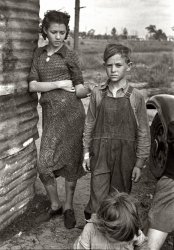
- All-American: 1939
- ... 35mm color transparency by Marion Post Wolcott for the Farm Security Administration. View full size.
God has blessed America ... Posted by Dave - 07/06/2020 - 10:11am -
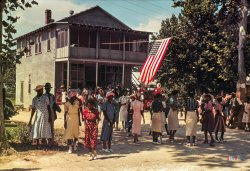
- Howard Stove Works: 1941
- ... Medium format negative by Jack Delano for the Farm Security Administration. View full size.
A fire waiting to happen Looks quite ... Posted by Dave - 04/06/2022 - 4:15pm -
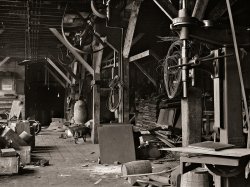
- Pantry Pride: 1941
- November 1941. "Mrs. Buck Grant, Farm Security Administration client, with her canned goods. Near Woodville, Georgia." Photo ... Posted by Dave - 02/22/2019 - 8:19pm -
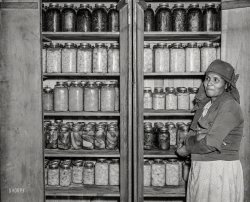
- Sky Chief: 1942
- ... Medium format acetate negative by John Vachon for the Farm Security Administration. View full size.
Die and pay taxes Taxes ... Posted by Dave - 02/23/2022 - 1:22pm -
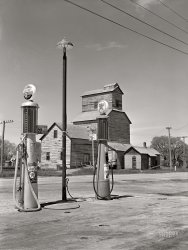
- Attention Honeymooners: 1939
- ... by Herbert Mayer in Virginia and Maine and residing in the Farm Security Administration archive at the Library of Congress, and its cryptic ... Posted by Dave - 02/14/2013 - 8:46am -
![Attention Honeymooners: 1939 From August 1939 comes this unlabeled negative, one of a series of pictures taken by Herbert Mayer in Virginia and Maine and residing in the Farm Security Administration archive at the Library of Congress, and its cryptic message. Honi soit qui mal y pense: Happy Valentine's Day from Shorpy! View full size.
No Thanks, Mr. GilbertI think if I was on my honeymoon I'd let Hollywood icon John Gilbert keep his bed while the missus and I got our own. Thanks for the offer though. And I do speak French and I do think evil of your offer.
News item: Aug. 26, 1936
An old saying."Evil be to him who evil thinks."
John GilbertAnother Rudolph Valentino-esque silent film star, John Gilbert died an alcoholic a few years before this photo was taken, but when the sign was painted he would have been one of the leading men of his era.
He was blacklisted by Louis Mayer after a fight between the two at Gilbert's (planned) double wedding, where he would have married Greta Garbo (who jilted him at the alter) while one of Mayer's leading directors, King Vidor, married his on bride, in what would have been a blockbuster event.
Sad tail of one of the early great romantic leads in Hollywood.
[The rest of him sounds sad, too. - Dave]
Into the WoodsIn the late 1940s, my parents, with me in tow, spent several Summer sojourns at the Summit. Being but a tad at the time, my recollections now are somewhat sparse -- mainly the nice lady who ran the gift shop and let me play (carefully) with some of the toys, my first taste of honeydew melon in the restaurant, some time in the swimming pool, finding the odd golf tee whilst rambling on the golf course. Oh, and attempting to ride the messenger's bike down the toboggan run. I'm sure my parents found other attractions to the place, though decency militates against my contemplating them. With the Internet, I could probably find out almost instantly what ever became of the place, but I prefer to remember it as it was then: a renowned haven for harried city dwellers (and apparently the repository for some of a failed actor's furniture).
The Summit Hotel and John Gilbert's BedFrom The National Road in Pennsylvania, pp. 54-55 (available in Google Books) By Cassandra Vivian (Arcadia, 2003): The Summit Hotel
Caption from post card on page: Summit Hotel, Golf and Country Club, (above the clouds) Uniontown, PA
"Sitting atop Chestnut Ridge (the south side), the Spanish mission-style of Mount Summit Inn was once famous as a honeymoon hotel (actor John Gilbert's bed is in its honeymoon suite). It was built in 1900 of native mountain stone to accommodate the tourists of the automobile era. The view is spectacular during all seasons of the year, and a huge veranda surrounds the hotel."
There are additional postcards and text in the adjoining pages.
A billboard so naughty... they had to say it in French.
They forgot to mentionHourly rates.
Mail PouchMail Pouch would paint your whole barn free in return for the ad space, not just part of it.
The bedHere's a postcard of the room.
[But steer clear of the Lupe Velez bathroom. - tterrace]
The photographerThe photographer was my great uncle. He owned a lumber company in Virginia, not sure how his photograph got into the archives.
Someone needs to relearnFrench because the direct translation of 'Honi soit qui mal y pense' is 'evil be to him who evil thinks' buuuut if it is actually Latin it's more along the lines of 'Evil is not welcome'. Side note... "honi" should be "Honni"
[It's archaic, not modern French, and appropriate for the historical context of the phrase. - tterrace]
(The Gallery, Valentine's Day)](https://www.shorpy.com/files/images/SHORPY_8b31619a1.thumbnail.jpg)
- Log Train Running: 1941
- ... Medium format acetate negative by Russell Lee for the Farm Security Administration. View full size.
Hardpack Harvest No doubt ... Posted by Dave - 02/08/2022 - 4:52pm -
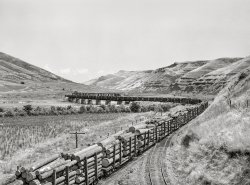
- Harrowed Ground: 1941
- ... Medium format acetate negative by Russell Lee for the Farm Security Administration. View full size.
Excellent title! Driving on ... Posted by Dave - 02/28/2022 - 12:02pm -
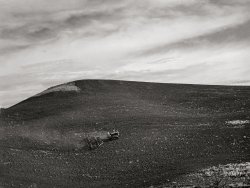
- Service Man: 1940
- ... Medium format acetate negative by John Vachon for the Farm Security Administration. View full size.
I’m from Michigan. Thanks ... Posted by Dave - 12/27/2019 - 2:34pm -
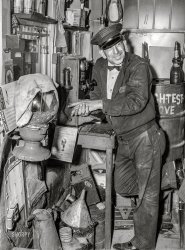
- Wapato Ennui: 1939
- ... near Wapato. One of Chris Adolph's younger children. Farm Security Administration Rehabilitation clients." August 1939. View full size. ... Posted by Dave - 07/05/2009 - 2:43am -
![Wapato Ennui: 1939 "Washington, Yakima Valley, near Wapato. One of Chris Adolph's younger children. Farm Security Administration Rehabilitation clients." August 1939. View full size. Photograph by Dorothea Lange.
WowThis is by far the most moving, beautiful photo I've seen in a long time. Thank you for posting it.
[And thank you for commenting it. Please spread the word! You might also like this one. - Dave]
I agree. This moving photoI agree. This moving photo is so sad. The girl in the picture looks so resigned to her fate.Likes she's already given in.
Yakima ValleyI'm going to ask my father about that settlement. He and my grandparents moved from Wisconsin to Yakima in '31.
Wapato girlThis photo appeared on the cover of the first edition of Dorothy Allison's "Bastard Out of Carolina."
Look at herThis child is gorgeous, look at her. There was no hair care, or skin care, or air conditioning....or much anything elsee.
(The Gallery, Dorothea Lange, Great Depression, Kids)](https://www.shorpy.com/files/images/8b34383u1.thumbnail.jpg)
- Entourage: 1941
- ... Medium format acetate negative by John Vachon for the Farm Security Administration. View full size.
Grimacing Judge, and who? ... Posted by Dave - 06/07/2020 - 1:39pm -
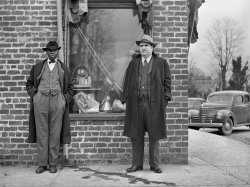
- Windows on the World: 1938
- ... Street." Where Camels agree! Photo by Sheldon Dick for the Farm Security Administration. View full size.
Mooners Over Manhattan ... Posted by Dave - 04/18/2019 - 9:56am -
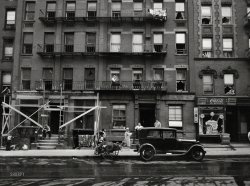
- Essolene: 1939
- ... Ranch general store. Chicot, Arkansas. Leased by the Farm Security Administration and subleased to its client." With your choice of ... Posted by Dave - 12/12/2012 - 12:55pm -
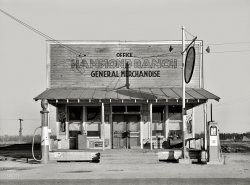
- No Money, Ten Children: 1937
- ... Medium-format nitrate negative by Dorothea Lange for the Farm Security Administration.
No Money, 10 Kids You'd think maybe the guy ... Posted by Dave - 09/09/2011 - 12:38pm -
![No Money, Ten Children: 1937 March 1937. Stalled in the Southern California desert. "No money, ten children. From Chickasaw, Oklahoma." View full size. Medium-format nitrate negative by Dorothea Lange for the Farm Security Administration.
No Money, 10 KidsYou'd think maybe the guy with the camera could help him out.
[That would be the gal with the camera. I've wondered about that too. - Dave]
Stranded FamilyI would give anything to know what became of them.
Stranded OkieThe composition here is epic. I feel like there's an entire novel conveyed in this one image.
Compassionate, not "Immune"Ms. Lange stopped beside a car full of children that had stalled in a waterless desert. Anybody who stops for a stalled car is stopping to help in some way. At the very least she would carry the news to the next town that there were ten children and their parents stuck in the desert. It's easy to imagine that if she had any money at all to spare, she gave some to this family. (Wouldn't you?) These people were not in the safety of a migrant labor camp. They were stuck in the middle of nowhere.
It is obvious from Ms. Lange's photographs that she was not "immune to poverty." She chose to document the suffering and the humanity of people in poverty. She must have had a good rapport with her subjects, or else their faces would not be so expressive. See myhero.com (http://www.myhero.com/myhero/hero.asp?hero=d_lange ) for a short biographical essay that stresses her sensitivity and compassion. See also the Wikipedia article about her (http://en.wikipedia.org/wiki/Dorothea_Lange). "Immune to poverty" is exactly what she was not.
DorotheaLange was contracted to this work from 1935. I suppose she was quite immune to poverty by that time.
GivingYou know, in those days it wasn't easy to give money to a man like that. Most people wouldn't accept charity. It was considered an admission of failure, defeat. He might have accepted a loan. If he did, I'm willing to bet he paid it off with the first money he came by after feeding his kids.
(The Gallery, Cars, Trucks, Buses, Dorothea Lange, Great Depression, On the Road)](https://www.shorpy.com/files/images/8b31796u_1.thumbnail.jpg)
- Beer Boulevard: 1938
- ... to dodge some traffic.) Photo by Arthur Rothstein for the Farm Security Administration. View full size.
Doo-Kane Recently heard a ... Posted by Dave - 11/26/2017 - 12:49pm -
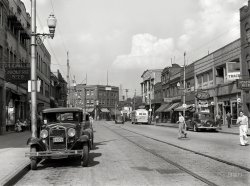
- St. Louis: 1940
- ... St. Louis, Missouri." 35mm negative by John Vachon for the Farm Security Administration. View full size.
St. Louis Fountain The ... Posted by Dave - 07/18/2011 - 10:44am -
